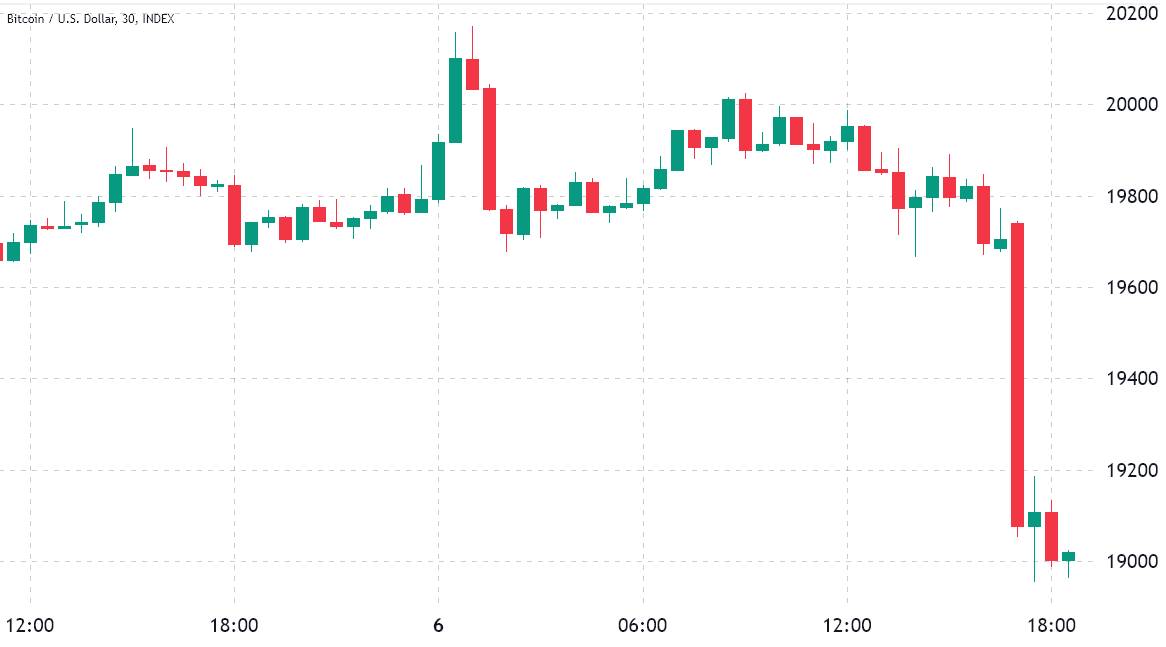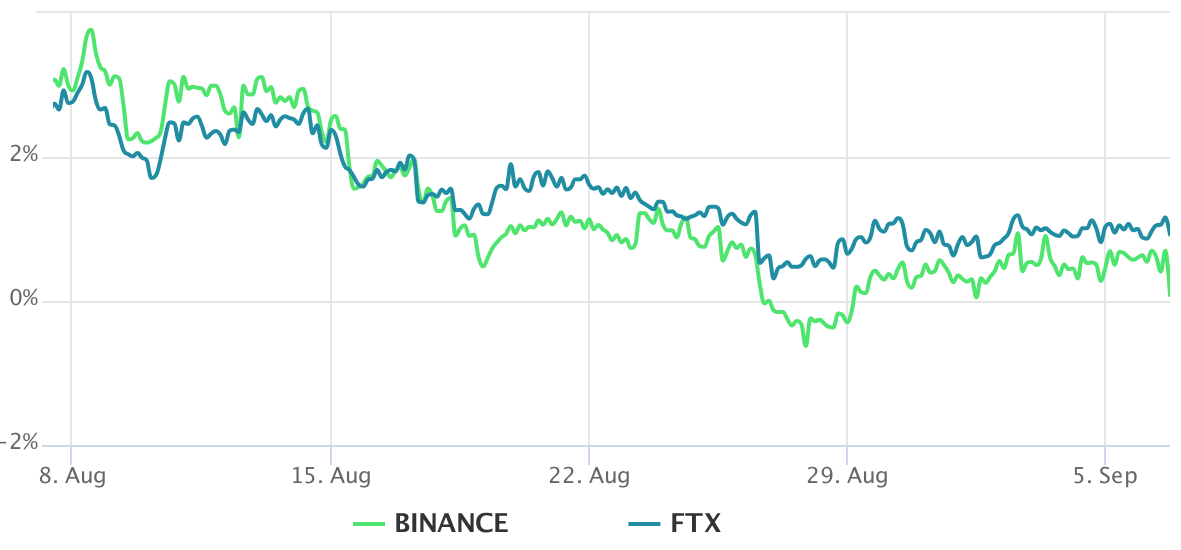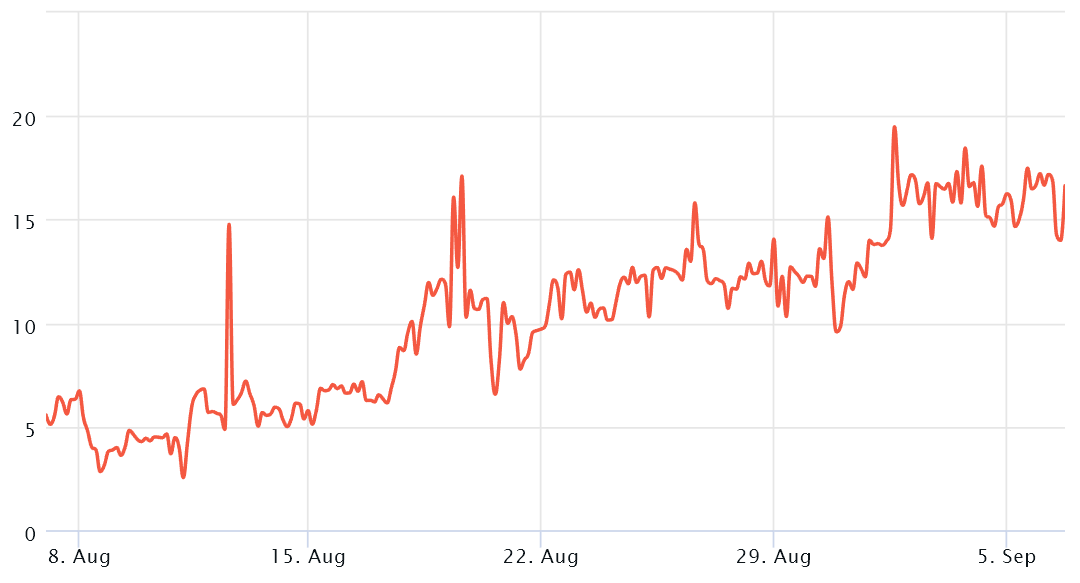An $860 surprise price correction on Sept. 6 took Bitcoin (BTC) from $19,820 to $18,960 in less than two hours. The movement caused $74 million in Bitcoin futures liquidations at derivatives exchanges, the largest in almost three weeks. The current $18,733 level is the lowest since July 13 and marks a 24% correction from the rally to $25,000 on Aug. 15.

It is worth highlighting that a 2% pump toward $20,200 happened in the early hours of Sept. 6, but the move was quickly subdued and Bitcoin resumed trading near $19,800 within the hour. Ether’s (ETH) price action was more interesting, gaining 7% in the 48 hours preceding the market correction.
Any conspiracy theories regarding investors changing their position to favor the altcoin can be dismissed as Ether dropped 5.6% on Sept. 6, while Bitcoin’s $860 loss represents a 3.8% change.
The market has been in a bit of a rut since Aug. 27 comments from U.S. Federal Reserve Chair Jerome Powell was followed by a $1.25 trillion loss in U.S. stocks in a single day. At the annual Jackson Hole Economic Symposium, Powell said that larger interest rate hikes were still firmly on the table, causing the S&P 500 to close down 3.4% that day.
Let’s take a look at crypto derivatives data to understand whether investors have been pricing higher odds of a downturn.
Pro traders have been bearish since last week
Retail traders usually avoid quarterly futures due to their price difference from spot markets. Still, they are professional traders’ preferred instruments because they prevent the fluctuation of funding rates that often occurs in a perpetual futures contract.

In healthy markets, the indicator should trade at a 4% to 8% annualized premium to cover costs and associated risks. So one can safely say that derivatives traders had been neutral to bearish for the past month because the Bitcoin futures premium remained below 3% the entire time. This data reflects professional traders’ unwillingness to add leveraged long (bull) positions.
One must also analyze the Bitcoin options markets to exclude externalities specific to the futures instrument. For example, the 25% delta skew is a telling sign when market makers and arbitrage desks are overcharging for upside or downside protection.

In bear markets, options investors give higher odds for a price dump, causing the skew indicator to rise above 12%. On the other hand, bullish markets tend to drive the skew indicator below negative 12%, meaning the bearish put options are discounted.
The 30-day delta skew had been above the 12% threshold since Sept 1, signaling options traders were less inclined to offer downside protection. These two derivatives metrics suggest that the Bitcoin price dump on Sept. 6 might have been partially expected, which explains the low impact on liquidations.
In comparison, the $2,500 Bitcoin drop on Aug. 18 caused $210 million worth of leveraged long (buyers) liquidations. Still, the prevailing bearish sentiment does not necessarily translate to adverse price action. Therefore, one should tread carefully when whales and market markers are less inclined to add leverage longs and offer downside protection using options.
The views and opinions expressed here are solely those of the author and do not necessarily reflect the views of Valideapp. Every investment and trading move involves risk. You should conduct your own research when making a decision.



